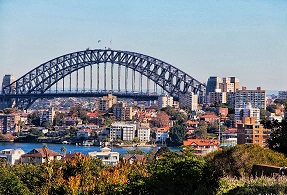
John Edwards, founder of Residex and consulting analyst at On The House, says the market has reached its ceiling in terms of rapid growth, and he predicts a much slower 4% p.a. growth over the next five years.
“Affordability is always going to be the limiter of growth in any market,” Edward says. “Houses and units in Sydney are now so unaffordable. I think you’ll find that Sydney is already showing signs that it’s hit its peak.”
Edwards points out that wages haven’t kept up with the strong surge in property values during the last quarter of 2013. In addition, concern about the rising level of unemployment and sluggish job growth has weighed on sentiment.
“The poor news on the employment front will be impacting on consumer sentiment, and without strong consumer sentiment the market is unlikely to stretch beyond affordability comfort levels,” says Edwards.
Andrew Wilson, chief economist at APM, agrees that Sydney is approaching its peak but believes it has some growth left in the tank.
“We’re talking one, maybe two more quarters of peak activity. But a 6% quarterly growth as we’ve seen in the December quarter is unsustainable,” he says. “Sydney doesn’t have a strong level of employment, population and immigration growth to support that kind of growth. So I believe we’re near the peak of the market at the moment.”
However, Wilson is quick to point out that there’s no sign of weakening activity just yet.
“It’s a question as to when activity starts to moderate, but it’s a confident market. We’re certainly looking at another couple of quarters of fairly strong activity. Then the fundamentals will start to kick in. I believe the affordability barrier will start to move into the market and we’ll see a moderation in activity by year end and eventually in prices.”
Like Edwards and Wilson, Tim Lawless, research director at RP Data, also sees slower growth in prices but points out this is not the beginning of a down market.
“Sydney has risen by 19% since the market bottomed out in May 2012, so it has recorded pretty phenomenal growth, but it also had a lot to catch up on,” he explains. “Sydney hasn’t peaked, but we’re going to see slower growth as the growth cycle matures. I don’t see falling values, just price growth slowing down to match inflation by mid-year,” he says.
Peaking or not, investors are advised to look at other capital cities yet to experience a growth spurt, such as Brisbane.
“Brisbane is in very solid catch-up mode. It’s about where it was three to four years ago, so there’s a bit of catching up to do,” says Wilson. “Brisbane is the second most affordable market; it offers the highest yield for houses and it’s currently being targeted by investors, so there’s plenty of potential to grow this year. I think it will grow by 5–7% this year. This will bring it on par with where the other markets are.”
